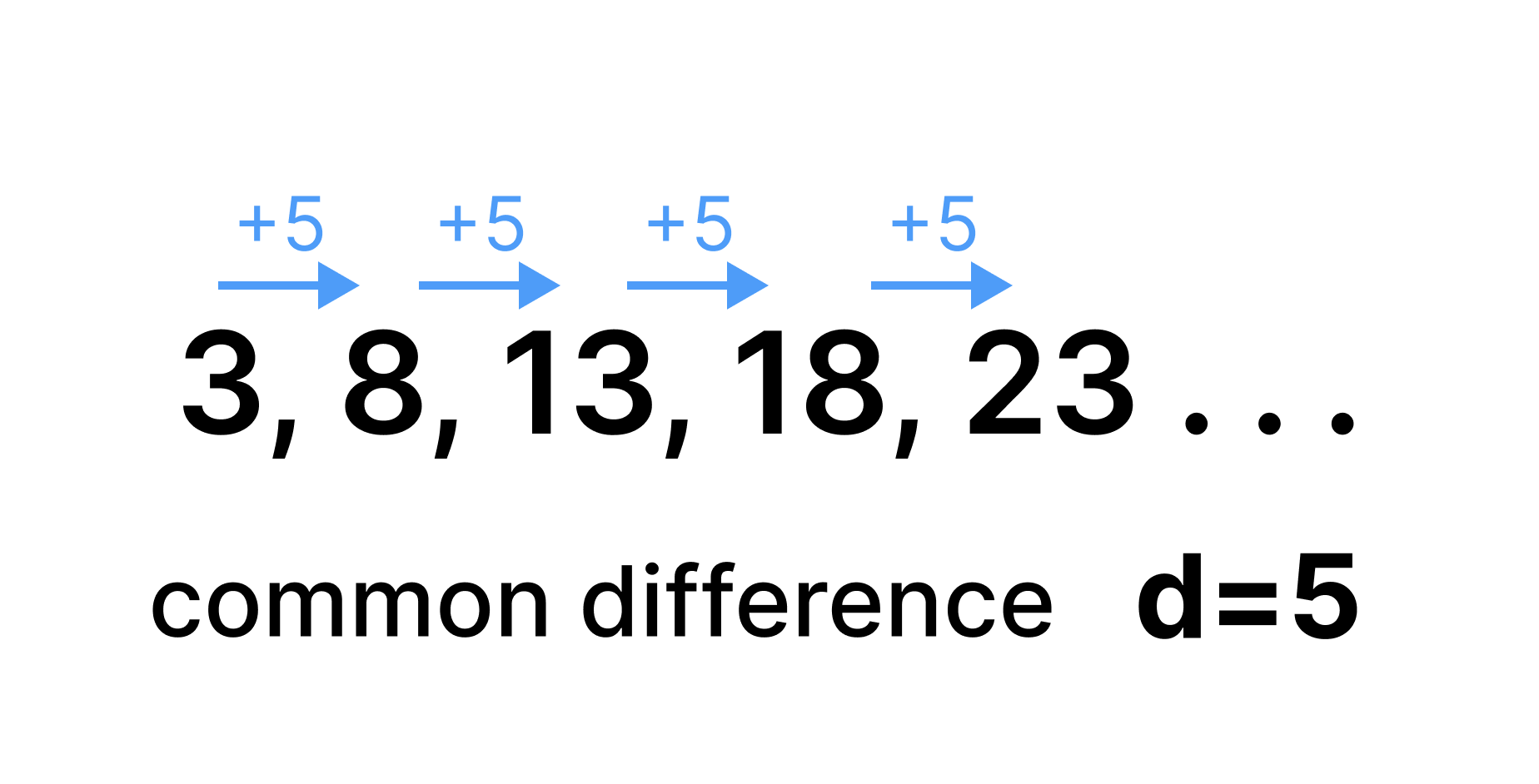Adblocker Detected

We always struggled to serve you with the best online calculations, thus, there's a humble request to either disable the AD blocker or go with premium plans to use the AD-Free version for calculators.
Disable your Adblocker and refresh your web page 😊
Table of Content
Arithmetic sequence calculator finds the nth term and the sum of the sequences of all values with the common difference “d”. The arithmetic series solver can solve the arithmetic sequence up to the nth term created by adding a constant value.
In mathematics,
“A particular sequence is an arithmetic sequence of numbers where each term is equal to the previous number, plus a constant value referred as “(d)”.

Arithmetic sequence, series, and progression are all talking about the same type of pattern in given values. The existing difference among numbers can either be positive or negative depending upon the arithmetic pattern.
Arithmetic series formula for nth term:
\(a_n = a_n1+(n-1) d\)
For an arithmetic progression, the formula is:
\(s = \dfrac{n}{2}\times 2a_1+(n-1)d\)
Where:
The above given arithmetic equations evaluates the sum of all values from the first to the nth term of the arithmetic sequence.
There is simple procedure to evaluate arithmetic series by putting the first term and the common difference in sum of arithmetic sequence calculator. Let us resolve a couple of examples to clarify the concept of nth terms and arithmetic sequence!
If the given terms are 3, 8, 13, 18, 23, 28, 33, 38,…., then what will be the 9th term?
We will apply the nth term of arithmetic sequence formula to further proceed with the calculations:
\(X_n = a_1 + d(n−1) = 3 + 5(n−1)\)
\(3 + 5n − 5\)
\(5n − 2\)
So, the next term in the above sequence will be:
\(x_9 = 5×9 − 2\)
\(=43\)
If the term is 1, 4, 7, 10, 13, …, then by applying the formula we can find the unknown.
Therefore, by applying the nth term of arithmetic sequence formula and putting values in it: So:
\(Σ^{η – 1}_{k = 0}(α + kd) = n/2 (2a + (η – 1)d)\)
\(Σ^{10 – 1}_{k = 0}(1 + k . 3) = 10/ 2 (2.1+(10 – 1).3)\)
On simplifying we will get: \( 5 (2 + 9·3) = 5 (29) = 145 \)
However, you can get these values by arithmetic sum calculator directly just by substituting the values in related fields.
The sum of infinite for an arithmetic sequence is undefined since terms leads to ±∞. The arithmetic series sum calculator provides sum of all the terms in the sequence. This sequence becomes essential to pick the value of “n” to calculate the partial sum of arithmetic sequence.
This series of infinite values will be equal to infinity even if the common difference is positive, negative, or even equal to zero.
| For n = 1 | a1 = 5 |
| For n = 2 | a2 = a1 + d = 5 + 4 = 9 |
| For n = 3 | a3 = a2 + d = 9 + 4 = 13 |
| For n = 4 | a4 = a3 + d = 13 + 4 = 17 |
| For n = 5 | a5 = a4 + d = 17 + 4 = 21 |
| For n = 10 | a10 = a9 + d = 37 + 4 = 41 |
| For n = 15 | a15 = a14 + d = 57 + 4 = 61 |
| For n = 20 | a20 = a19 + d = 77 + 4 = 81 |
| For n = 25 | a25 = a24 + d = 97 + 4 = 101 |
| For n = 30 | a30 = a29 + d = 117 + 4 = 121 |
| For n = 35 | a35 = a34 + d = 137 + 4 = 141 |
| For n = 40 | a40 = a39 + d = 157 + 4 = 161 |
Reference:
Wikipedia: Arithmetic progression, Derivation, Standard deviation, Intersections, Examples, and notation, Defining a sequence by recursion.
ChilliMath: Increasing and Decreasing Arithmetic Sequences, examples of Arithmetic Sequence.